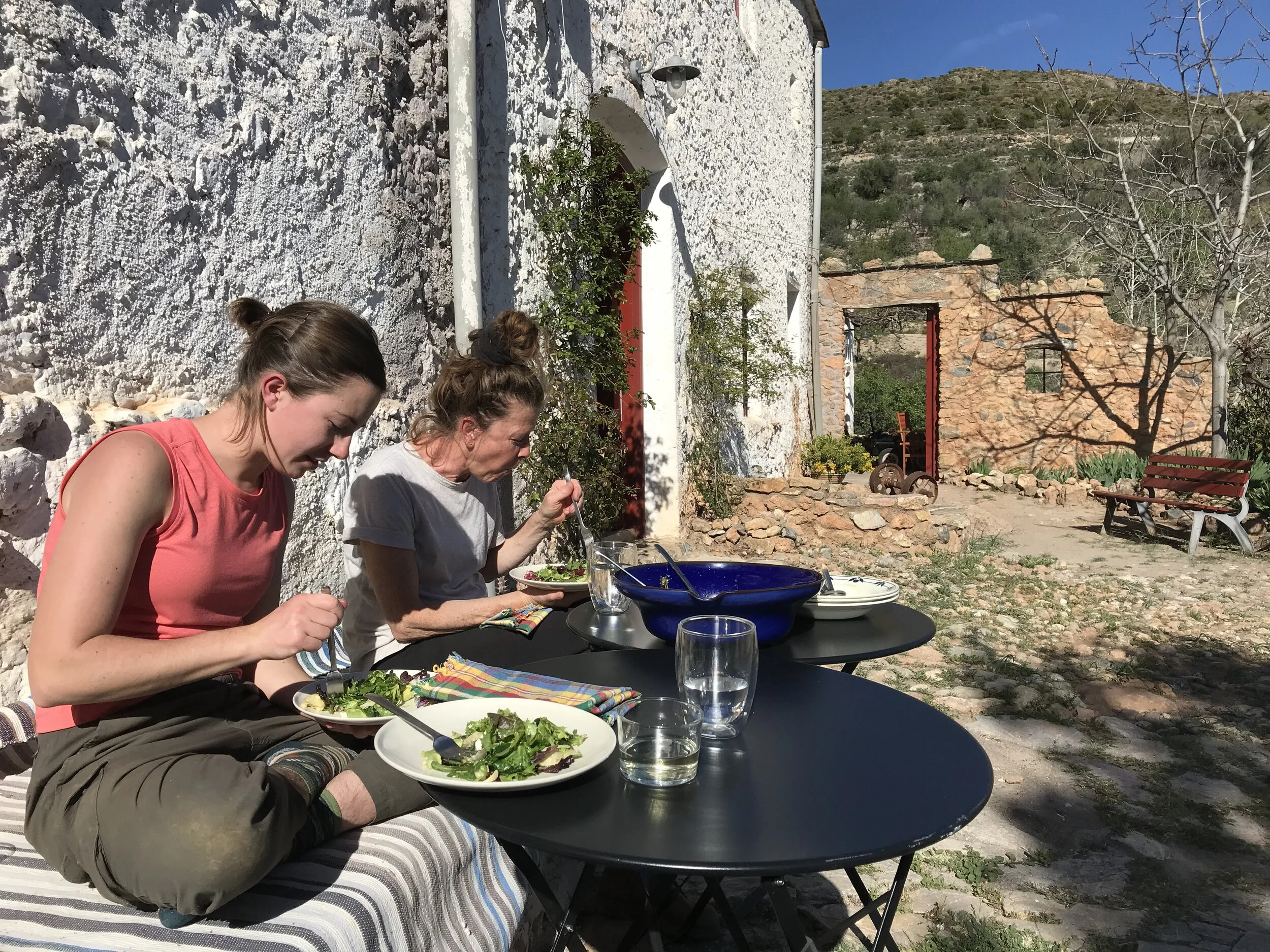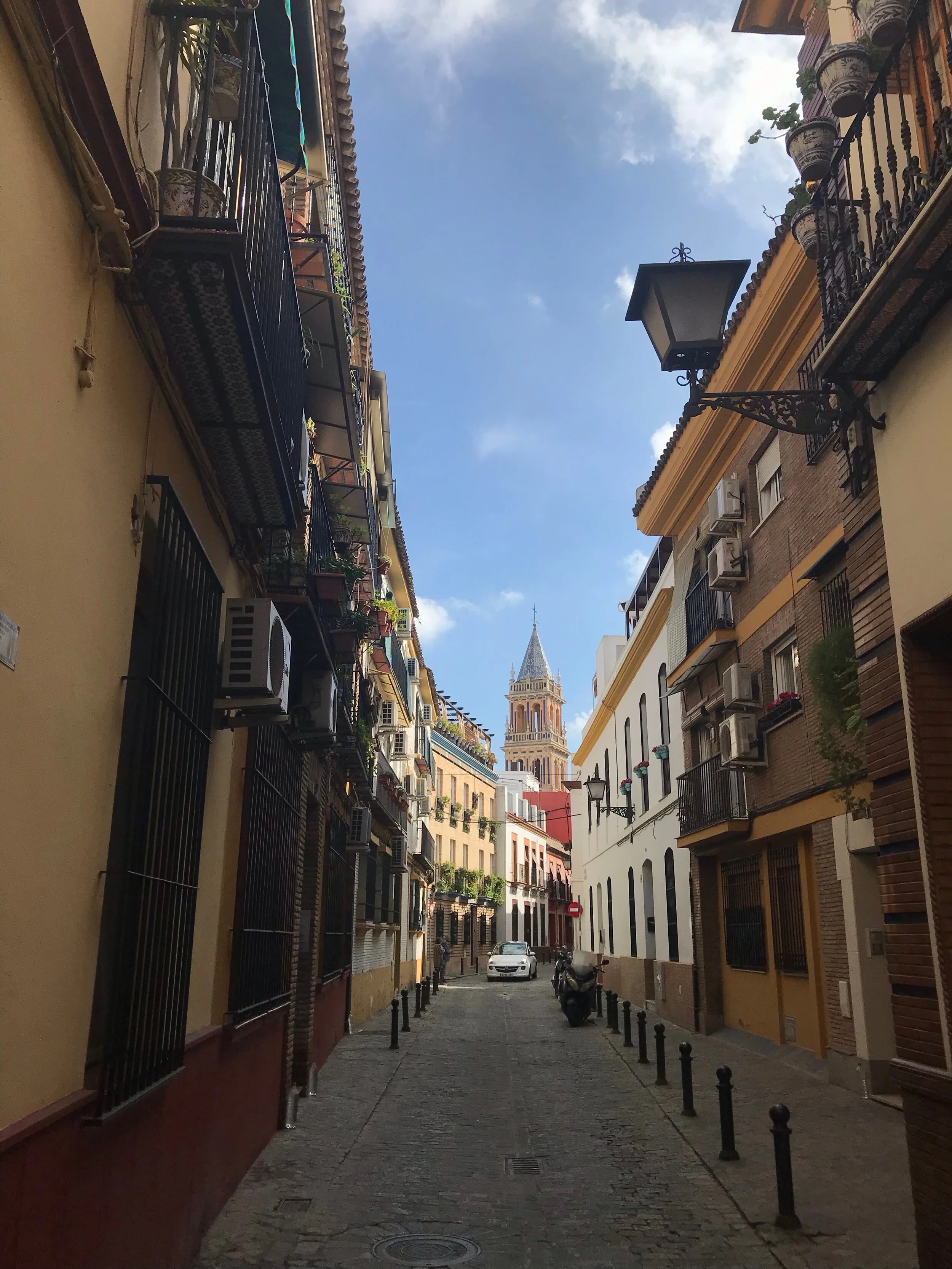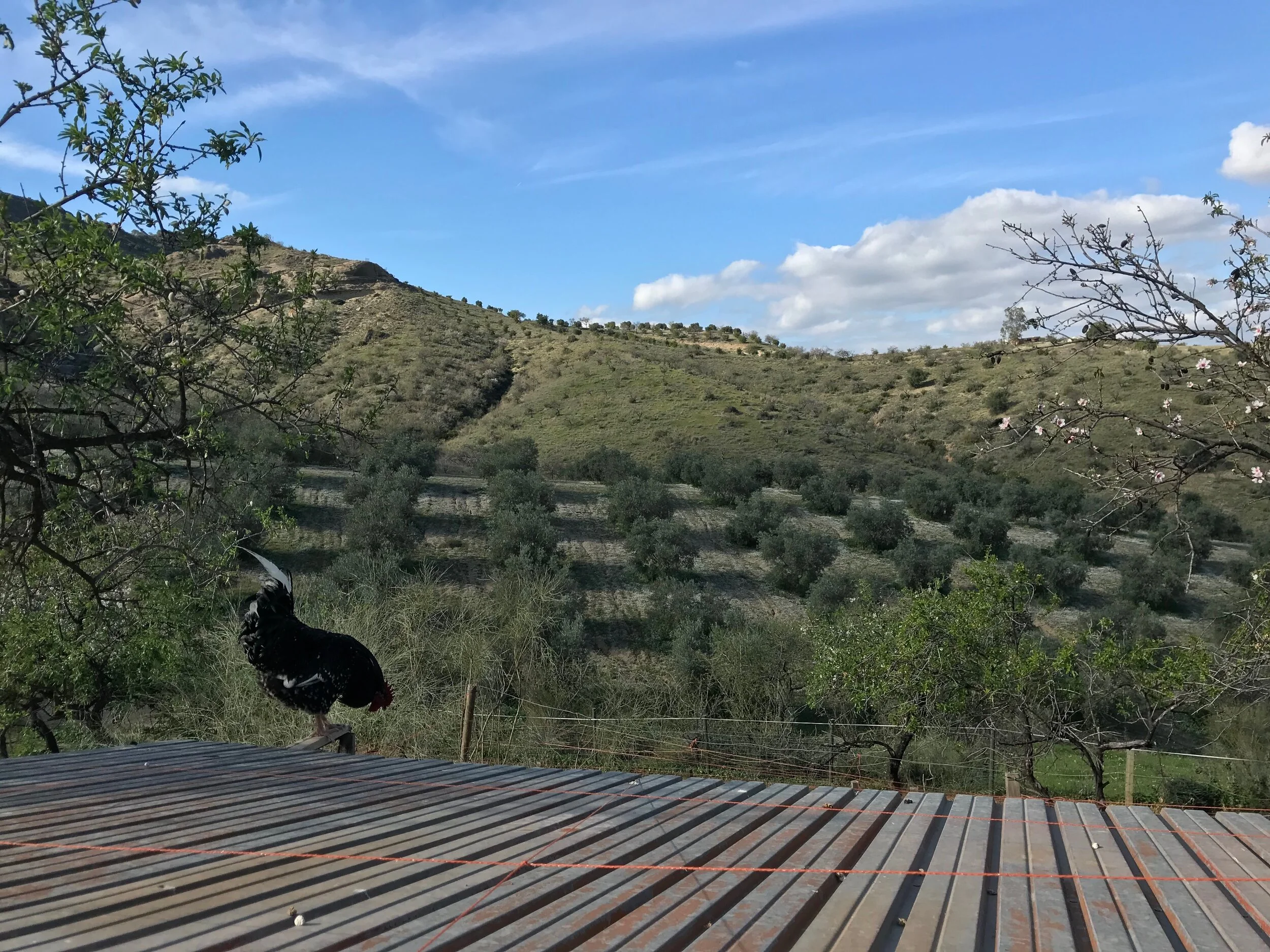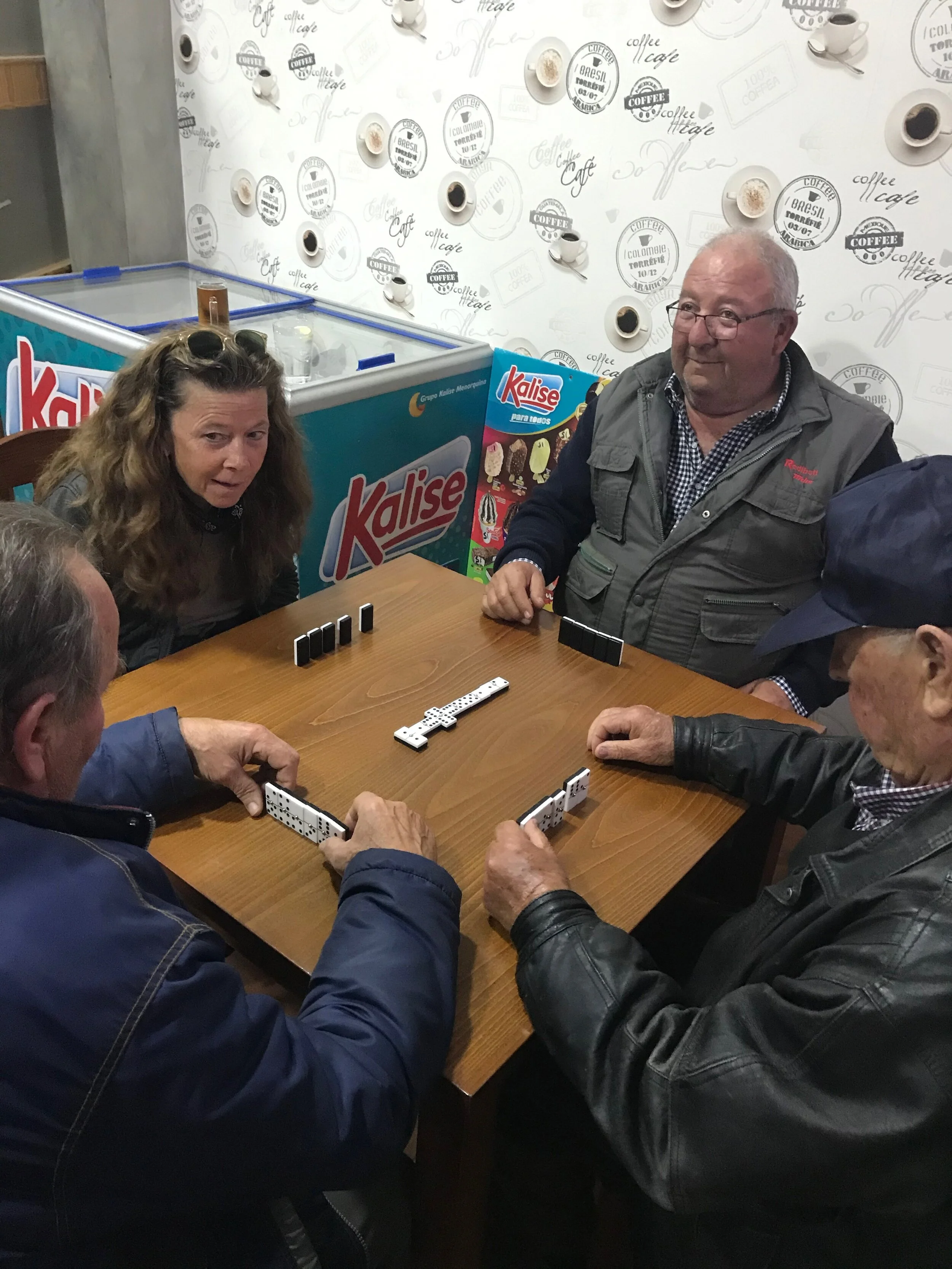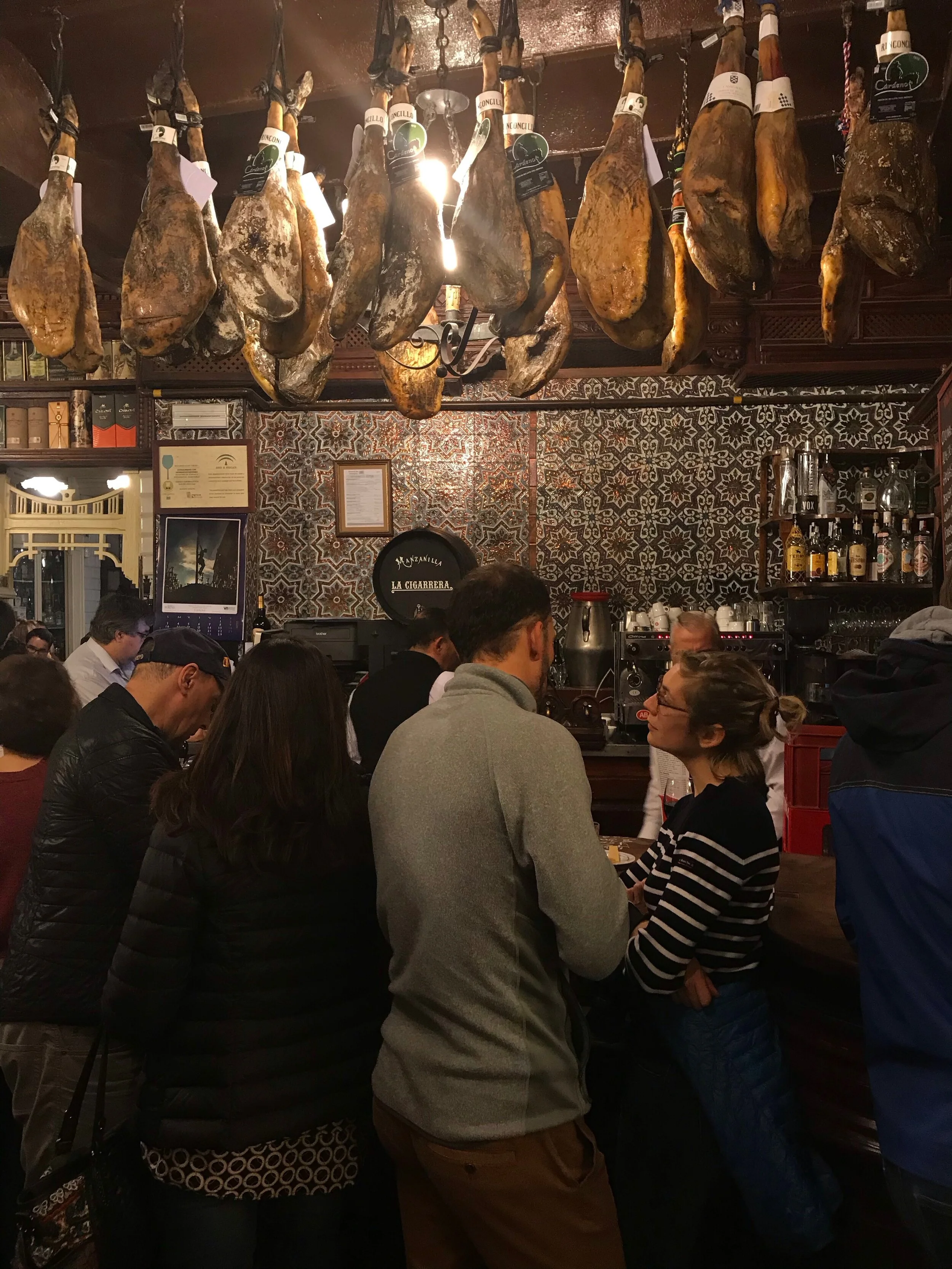Seeing Spain, Eating in Spanish
Tapa a la Plancha with Ian and Malaika at Mercat de la Boqueria in Barcelona
Lunch at “The Molino” with Jodi
We’ve covered a lot of ground in these first few weeks. Speeding by train from north to south you feel as if you’re traveling back in time: from creative and rebellious Cataluña in the northeast - metropolitan Barcelona, home of Gaudí and Dalí, rebuilt and revitalized for the 1992 Olympics, now a contrast of bustling boutiques and gothic barrios; through stately and historic Madrid in Spain’s center - stumbling out of El Prado into the cool night air, winding through a zigzag of thousand-year-old alleys to visit hundred-year-old cervecerías, much later stumbling into the twinkling la Plaza del Sol which could rival Times Square; and down to the spirited Andalucían south - Flamenco in Seville, Sherry in Jerez, alcazars and glimmering coast, vestiges of an opulent moorish past mixed with the Spanish spirit of today.
Throughout the country, and especially as you move south, there’s a strong vestige of Hemingway’s Spain as well. A proud machismo evidenced as much in the bull’s head hanging from the wall of the sherry bar as in the balls hanging from the always un-neutered dogs. Beautiful watercolor posters hang in town squares and churches advertising the new season of now-controversial bull fights*. When we arrive to work in a new place, Breezy is always confused for the chef and I for the farmer until we clarify. And early in the evening, from village squares to city alleyways, weathered old men grab cañas (short beers) and play dominoes while their wives finish dinner (already having prepared breakfast, lunch, and a handkerchief of fried sardines to be eaten with dominoes). That said, it would be far easier to feel indignant over the whole Hemingway-mystique if the old men weren’t so jovial, their wives so generous, and the sherry so good. And it’s a bit hard to criticize the bull mount when your mouth is full of braised oxtail.
From our train, in the high-speed blur of rust and green landscape, we can make out small stone ruins, crumbling and long since useful, still standing watch over the far-flung fields of vineyards and fincas. At stops, we see women leaning out apartment windows like the cigarettes hanging from their mouths, putting clothes on the line and chatting with neighbors who enjoy a noon-time tapa below. When we arrive in each successive city it is late - eight, sometimes ten - and still, children awaiting dinner are playing soccer outside of the station using the nearby bodega’s doorway as a goal.
And that oxtail encapsulates some of the complicated beauty of eating in a foreign country. The difficulty of juggling respect for people, place, and history with new and evolving notions of how things ought to be. And if food can synthesize all of that, past and present, home and abroad, really delicious food may make some of these conversations easier to have and this grappling with our pasts easier to swallow. And mealtime may be the best way to get to know a place and its people.
Which brings me to one remarkable universality throughout Spain, seen in neighbors getting tapas and old men enjoying a round of drinks, dominoes, and sardines: mealtime here is cherished. Whether in the mountains or in a city, “quick bites” are not known here and the work day is structured around break time and eating rather than in the reverse. People make the time and space to sit with each other over long meals and good conversation. Breakfast is late so as not to start your day rushed, lunch is long to avoid the scorching heat of Spanish summer, dinner and drinks lasts for hours to ensure you have enough time to catch-up, and Sundays are always reserved for family. Put simply, sharing a meal here is sacred and everyone seems immensely happy for it.
Our Typical Spanish Work(?) Day
In the mornings we plan our days over coffee, a cortado or cafe con leche. Agenda set, we make our morning errands, gather supplies, or meet with others in preparation of the work to be done, followed by breakfast, a pastry or pan con tomate. Sated, we can now begin, and work from 11 to 3 with a pre-lunch break at one for a tapa and more coffee, a caña, or sherry. At three we break for almuerzo, lunch, with coworkers, family, and friends, a big meal followed by siesta where we sleep off the hottest part of the day. At five we return to finish any projects in the kitchen or fields before heading for dinner around 8, which may last until 11 or later. Yes, somehow the Spanish have universally adopted a schedule known only to CEOs and silicon valley.
*Many visitors to Spain are unaware that a traditional bullfight sees three matadors, accompanied by teams of horsemen, each slaughter two bulls over the course of the spectacle. Anti-bullfight graffiti now covers the centuries old entrances to some rings and many fights in larger cities are attended only by oblivious tourists. But matadors are still highly regarded throughout Spain, and small Andalucían towns such as Ronda, home to one of the oldest rings in Spain, still celebrate the sport enthusiastically. Meat from the fight is consumed and much is donated to local homeless shelters.


